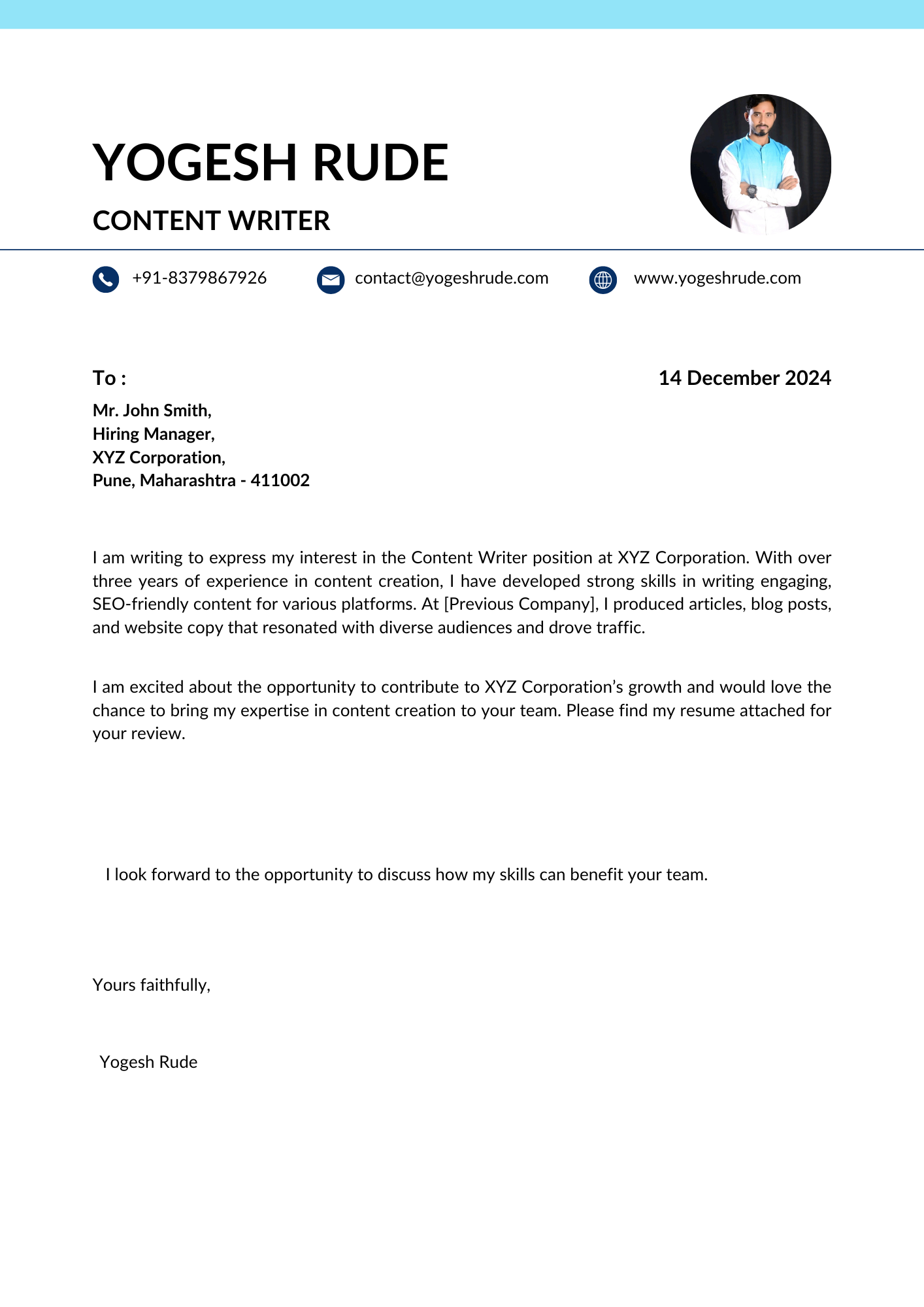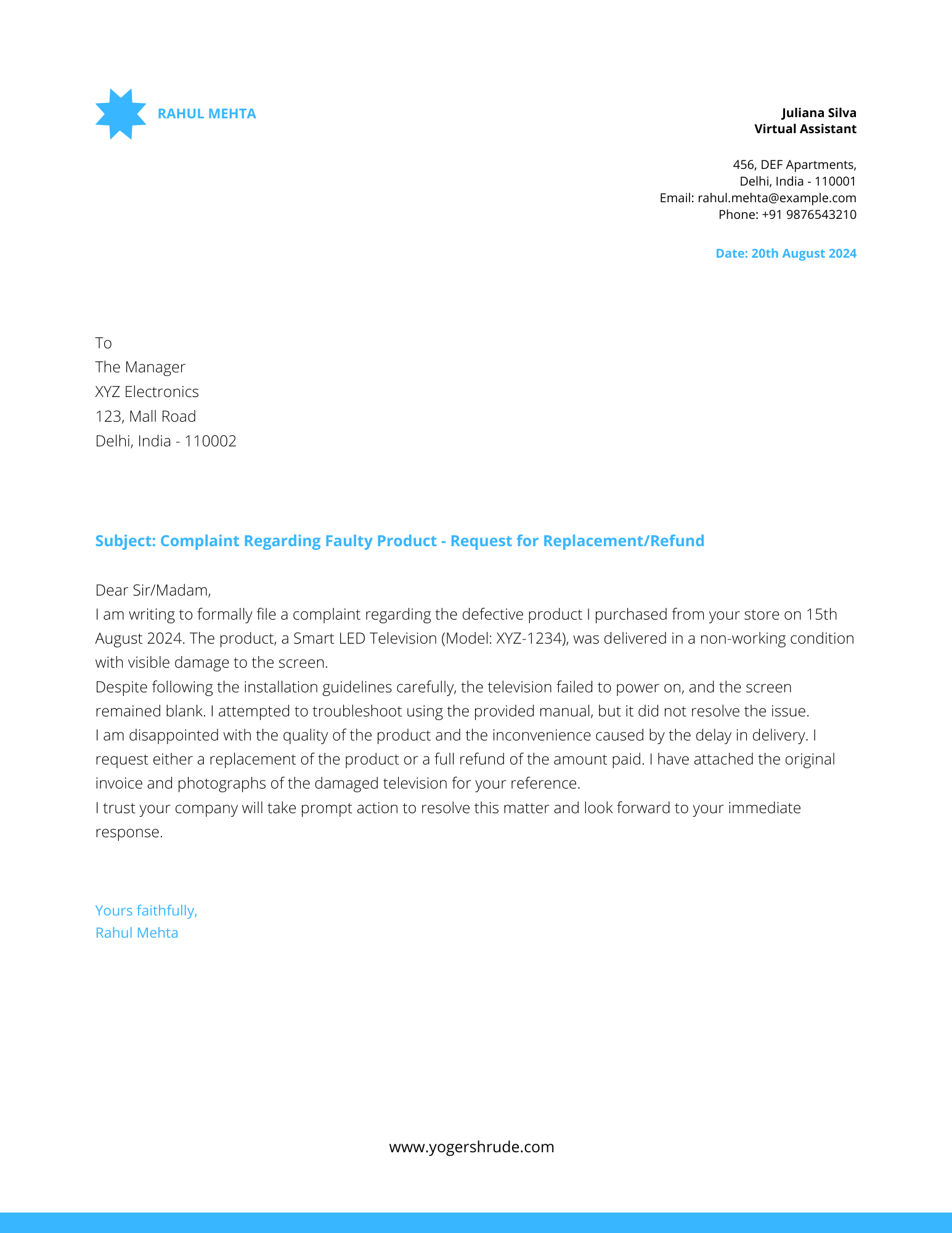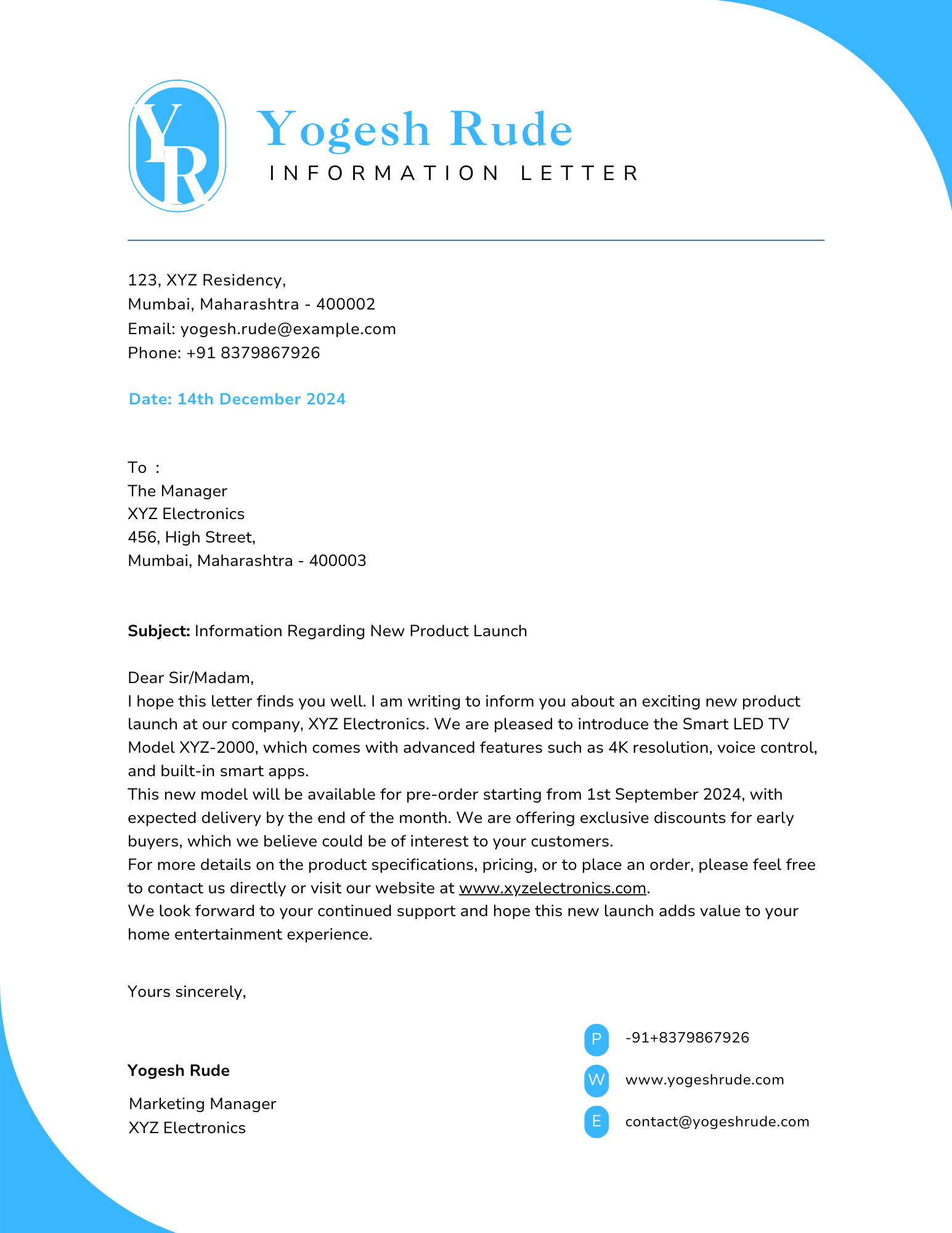Formal letter writing is an essential skill for effective communication, whether in professional, academic, or personal contexts. Unlike informal letters, formal letters follow a specific structure and tone, making them suitable for addressing business organizations, government officials, or educational institutions.
In this guide, we provide examples of formal letter writing in English, complete with detailed formats, templates, and practical tips to help you craft clear and professional letters. Whether you’re looking to learn the formal letter format in English or understand how to write formal letters for various purposes, this resource covers everything you need to know.
What is a Formal Letter?
A formal letter is a structured form of written communication typically used for official or professional purposes. Unlike informal letters, which are casual and personal, formal letters adhere to a standard format and formal tone. They are commonly used to address business organizations, government officials, academic institutions, or any professional entity.
For instance, examples of letter writing in English include job application letters, complaint letters, inquiry letters, and letters to editors. Each of these follows specific rules of etiquette and format to maintain professionalism and clarity. Understanding how to structure and write these letters is essential for effective communication.
How Do You Write a Formal Letter?
Writing a formal letter requires following a specific structure and format. Here’s a step-by-step guide to help you understand how to write a formal letter with example:
- Salutation
- Begin with a polite greeting, such as “Dear [Recipient’s Name],” or “To Whom It May Concern,” if the recipient is unknown.
- Introduction (First Paragraph)
- State the purpose of the letter clearly and concisely. For example:
“I am writing to inquire about…” or “I would like to express my interest in…”
- State the purpose of the letter clearly and concisely. For example:
- Body Paragraphs
- Provide detailed information supporting your purpose.
- Keep paragraphs short, focused, and professional.
- Closing Remarks
- Summarize your main point and express gratitude or expectations politely.
For example:
“Thank you for your time and consideration. I look forward to your response.”
- Summarize your main point and express gratitude or expectations politely.
- Closing Line and Signature
- Use a formal closing, such as “Yours sincerely,” or “Yours faithfully,” followed by your full name and designation (if applicable).
How to Improve Writing Skills in English for Beginners: A Complete Guide
Formal Letter Format in English
The format of a formal letter is structured and follows a standard layout. Below is a step-by-step guide to the formal letter format in English:
- Sender’s Address
- Write your address at the top left corner of the letter.
- Example:
123, ABC Street,
Mumbai, Maharashtra – 400001.
- Date
- Mention the date below the sender’s address. Use a clear format like 12th July 2024 or July 12, 2024.
- Recipient’s Address
- Include the recipient’s name, designation (if applicable), and full address.
- Example:
Mr. John Doe,
Manager, XYZ Company,
Pune, Maharashtra – 411001.
- Subject Line
- Write a concise subject that states the purpose of the letter.
- Example:
Subject: Application for the Position of Content Writer
- Salutation
- Use a polite greeting such as:
- Dear [Recipient’s Name] (if known)
- To Whom It May Concern (if unknown)
- Use a polite greeting such as:
- Body Content
- Divide the content into three parts:
- Introduction: Briefly introduce the purpose of the letter.
- Main Content: Provide details, explanations, or requests clearly.
- Conclusion: Summarize and express gratitude or future expectations.
- Example:
I am writing to apply for the position of Content Writer as advertised on your website.
- Divide the content into three parts:
- Closing and Signature
- Use a formal closing such as:
- Yours sincerely, (if the recipient’s name is known)
- Yours faithfully, (if the recipient’s name is unknown)
- Below the closing, add your full name and designation (if applicable).
- Example:
Yours sincerely,
Yogesh Rude
- Use a formal closing such as:
Examples of Formal Letter Writing in English
Below are the images showcasing Examples of Formal Letter Writing in English. These examples illustrate the correct format and structure for various types of formal letters, including job applications, complaint letters, and requests for information. By referring to these examples, you can easily understand how to draft a professional and effective formal letter, ensuring that your communication is clear and appropriate for any situation.
1. Job Application Letter Example

2. Complaint Letter Example

3. Request for Information Letter Example

Download formal letter templates and explore more examples here.
Common Mistakes to Avoid in Formal Letter Writing
Writing a formal letter requires precision and clarity. Avoiding common mistakes can help ensure your letter is professional and effective. Here are some pitfalls to steer clear of:
1. Using Informal Language
- Avoid slang, contractions (like “can’t” or “won’t”), and casual expressions. Formal letters require a professional tone.
2. Neglecting Proper Formatting
- Forgetting essential parts like the sender’s address, date, or recipient’s details can make your letter incomplete. Stick to the formal letter structure.
3. Incorrect Salutation
- Using incorrect titles (e.g., “Dear Sir” when addressing a female recipient) can leave a bad impression. Ensure the salutation matches the recipient’s designation.
4. Poor Grammar and Spelling
- Typos, grammatical errors, and awkward sentence constructions make your letter look unprofessional. Always proofread before sending.
5. Overloading with Information
- Keep the content concise and relevant. Avoid unnecessary details that dilute the purpose of your letter.
6. Not Being Clear and Specific
- Failing to convey the purpose of your letter clearly can confuse the recipient. State your intent in the opening paragraph.
7. Ignoring Tone Appropriateness
- A formal letter should be polite, even when lodging complaints. Avoid sounding rude or aggressive.
8. Missing Attachments
- When referencing documents (e.g., resumes, receipts), ensure they are attached and mentioned in the letter.
9. Failing to End Properly
- Always end with a closing line like “Yours sincerely” or “Yours faithfully,” followed by your name and signature.
In Conlusion
Mastering formal letter writing is an essential skill for both personal and professional communication. By following the guidelines and examples shared in this guide, you can confidently draft letters that are clear, concise, and effective. Remember, consistent practice will help you refine your skills and ensure your letters always leave a lasting impression.
“With these examples of formal letter writing in English, you can confidently draft professional and clear letters. Practice the format, and you’ll master formal letter writing in no time.”
Click here to practice your formal letter writing skills with these helpful resources.

